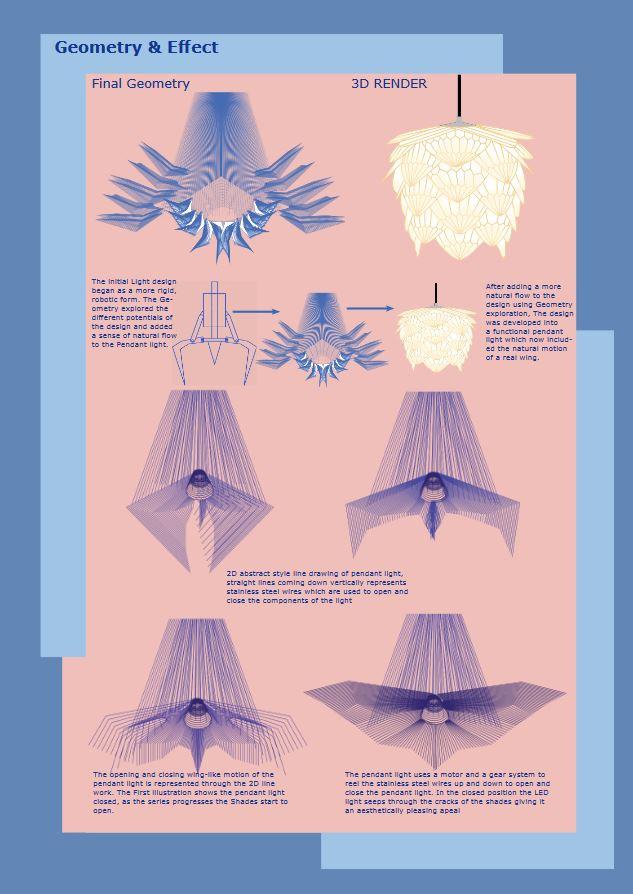
1 minute read
PART C: COMMUNICATION REFLECTIVE QUESTIONS
from Final Folio
Week 3
1. What were your challenges in documenting your investigation (see last week Homework, #1.2) with images only?
Advertisement
The challenges i faced with documenting my chosen system using images were capturing the system from the right angles, having sufficient lighting which best represents the details in the system, having a sufficient amount of images to create a series to show it’s motion and also editing the photos afterwards to maximise the details.
What were your challenges in documenting your investigation (see last week Homework, #1.2) with words only?
The Most challenging aspect using words to document my chosen system was using the correct terminology to describe the motion of my system, i was prompted to do research on similar systems to find the correct ways to explain the design.
What were your challenges in documenting your investigation (see last week Homework, #1.2) with line drawings only?
The challenges i faced when documenting my chosen system were centered primarily on the drawing aspect of the documentation. I struggled with choosing the right symbols and annotations to best explain the function, motion and feel of the chosen system. The tracing part was the easiest part of the documentation, then i had to use the correct linetypes to demonstrate the motion of the system.
Week 5
1. How can architecture communicate emotively with its occupants?
Architecture can communicate to it’s occupants emotively by using design aspects such as colour, lighting, textures ETC to create different atmospheres in the building, for example, dim lighting can create a warm cozy feeling.
2. As a creator, it may appear obvious how your idea transformed into the design. For a viewer, this may not be a case.
How can designers make sure their design communicates the idea accurately?
Designers can ensure they communicate their idea correctly by using things such as models, prototypes and concept sketches. These can show the viewers how the design was developed and what the thinking process was during the design process.
How can designers make sure their visualisations and representations of the design communicates the idea accurately?
Designers can use techniques such as renderings, concept drawings and animation to show viewers what their ideas of the design are. Clear annotations and explanations will help viewers understand what you are trying to communicate as they may not be familiar with design terminology.









